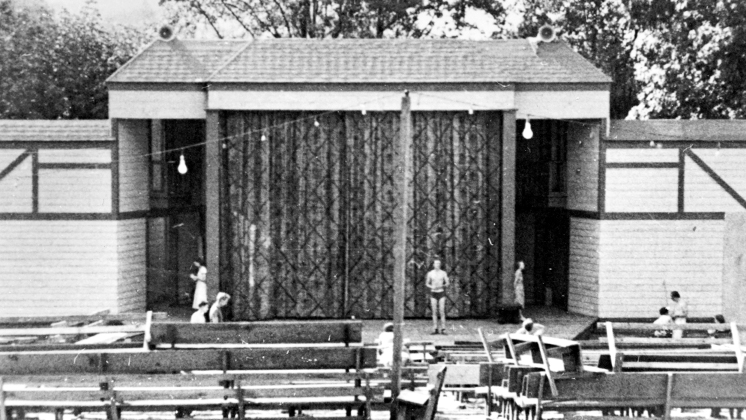 1935 Elizabethan Stage
1935 Elizabethan Stage
And so, just as the cast flyer for these 1935 Festival productions prophetically announced them to be the
“First Annual Shakespearean Festival,” OSF became an Ashland tradition—a tradition that hinged
on a relationship of mutual benefit, commitment and support with its host city throughout the following 77
years. The Festival’s first “Year Round Publicity Plan” was created in 1938 by the public
relations representative from the City of Ashland, Gordon Claycombe, as a joint initiative for both City and
Festival. While national in scope, the proposal focused on the western states, with an eye towards the
opportunity for widespread exposure that the 1939 World’s Fair in San Francisco would provide. Bowmer
credited Claycombe’s marketing success as the reason OSF was able to resume and grow after closing for six
years during WWII. Following the war, the Ashland Chamber of Commerce appealed to Bowmer to restart the
Festival. He replied that it would only be possible if local demand existed saying, “…if the people
of Ashland want to start it again, I am available for a price.” In response, Angus was paid for his work
as Producing Director for the first time in 1947 with a sum of $1,000 from the Ashland Chamber of Commerce.